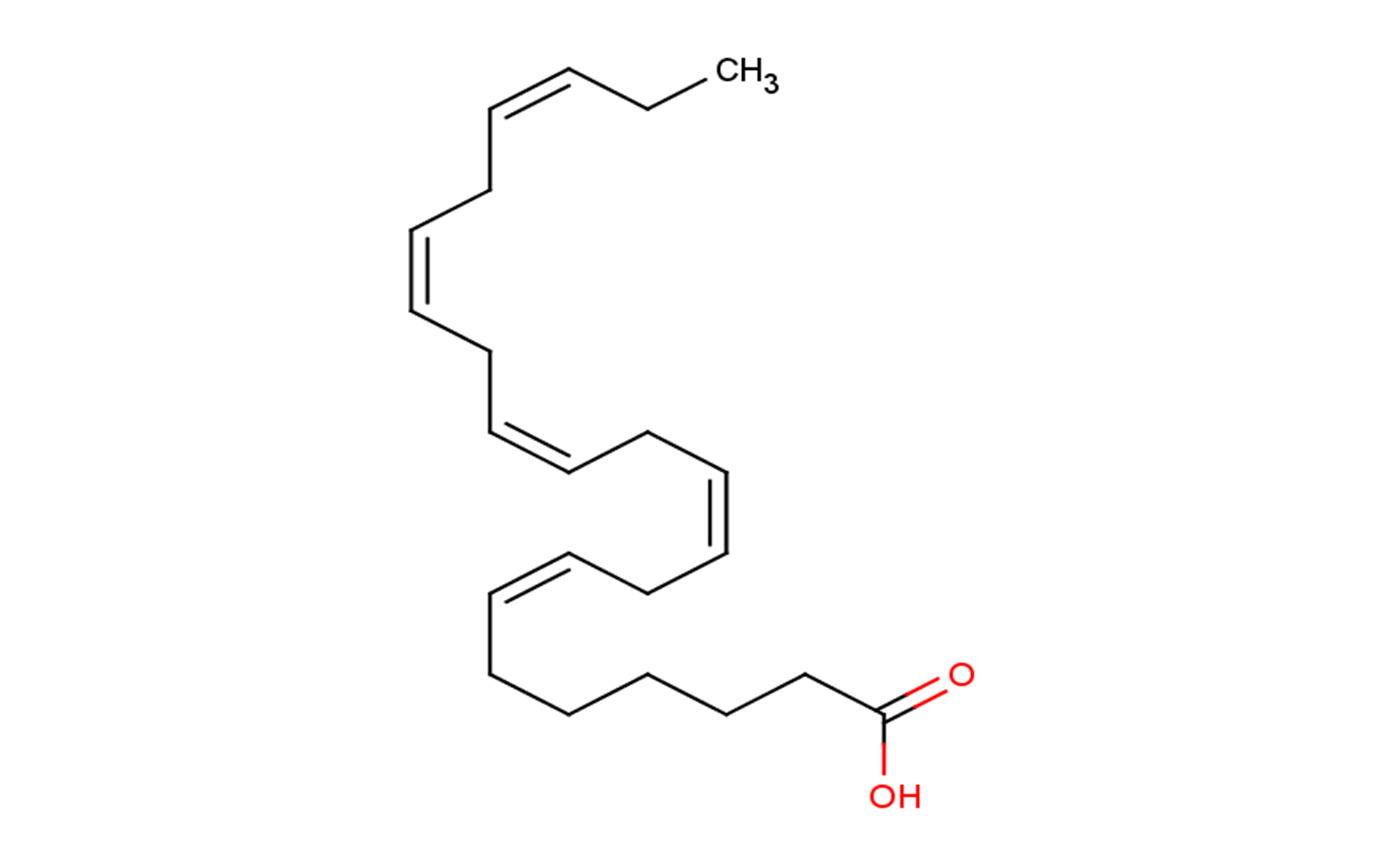
Docosapentaenoic acid 22n-3
CAS No. 24880-45-3
Docosapentaenoic acid 22n-3( —— )
Catalog No. M24134 CAS No. 24880-45-3
Docosapentaenoic acid 22n-3 is present in the cell membranes of all animals and is a component of phospholipids.
Purity : >98% (HPLC)
 COA
COA
 Datasheet
Datasheet
 HNMR
HNMR
 HPLC
HPLC
 MSDS
MSDS
 Handing Instructions
Handing Instructions
| Size | Price / USD | Stock | Quantity |
| 5MG | 132 | In Stock |


|
| 10MG | 197 | In Stock |


|
| 25MG | 329 | In Stock |


|
| 50MG | 491 | In Stock |


|
| 100MG | Get Quote | In Stock |


|
| 200MG | Get Quote | In Stock |


|
| 500MG | Get Quote | In Stock |


|
| 1G | Get Quote | In Stock |


|
Biological Information
-
Product NameDocosapentaenoic acid 22n-3
-
NoteResearch use only, not for human use.
-
Brief DescriptionDocosapentaenoic acid 22n-3 is present in the cell membranes of all animals and is a component of phospholipids.
-
DescriptionDocosapentaenoic acid 22n-3 is present in the cell membranes of all animals and is a component of phospholipids.
-
In Vitro——
-
In Vivo——
-
Synonyms——
-
PathwayProteasome/Ubiquitin
-
TargetEndogenous Metabolite
-
RecptorHuman Endogenous Metabolite
-
Research Area——
-
Indication——
Chemical Information
-
CAS Number24880-45-3
-
Formula Weight330.5
-
Molecular FormulaC22H34O2
-
Purity>98% (HPLC)
-
SolubilityIn Vitro:?DMSO : 50 mg/mL (151.29 mM)
-
SMILESCC/C=C\C/C=C\C/C=C\C/C=C\C/C=C\CCCCCC(=O)O
-
Chemical Name——
Shipping & Storage Information
-
Storage(-20℃)
-
ShippingWith Ice Pack
-
Stability≥ 2 years
Reference
1.Sinclair HM, et al. Essential fatty acids in perspective. Hum Nutr Clin Nutr. 1984 Jul;38(4):245-60.
molnova catalog



related products
-
DL-Dopa
DL-Dopa is a phenylalanine beta-hydroxylated derivative.
-
Cardiolipin (Heart, ...
Cardiolipin (Heart, Bovine) sodium is a phospholipid found in mitochondria and is involved in mitochondrial structure and function.Cardiolipin (Heart, Bovine) sodium is used in the study of neurological, cardiovascular, and metabolic diseases.
-
Quinaldic acid
Quinaldic acid also known as quinaldate or chinaldinsaeure belongs to the class of organic compounds known as quinoline carboxylic acids.



 Cart
Cart
 sales@molnova.com
sales@molnova.com


